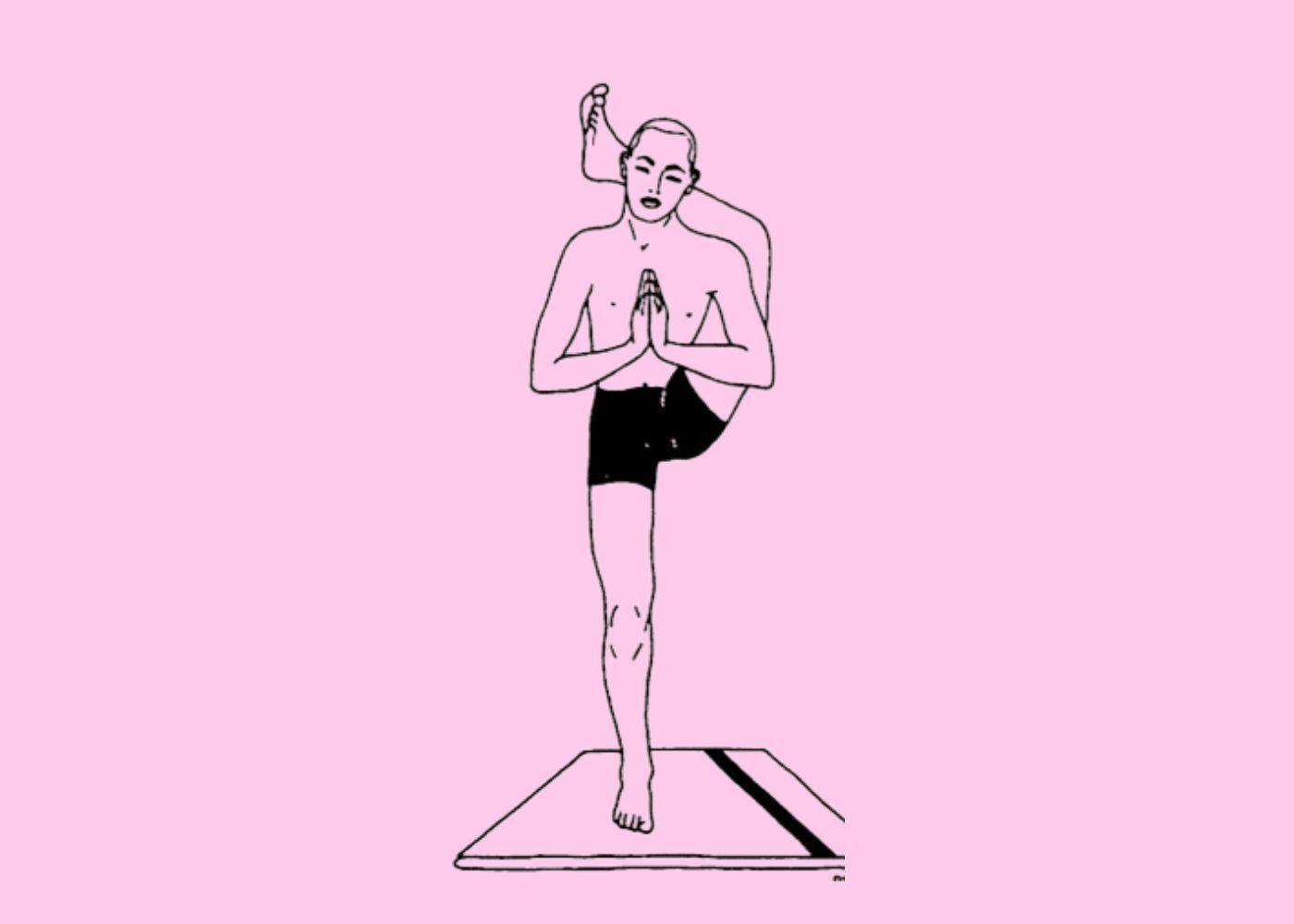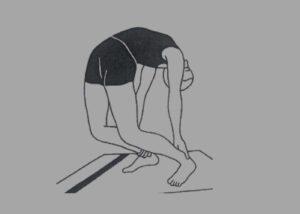The Standing Foot to Head Pose, or Utthan Eka Pada Sirasana, is an advanced yoga pose that blends balance, strength, and flexibility. This pose, which is a part of the Ashtanga Yoga sequence, takes a lot of practice and preparation. It can provide a number of psychological and physical advantages when done properly. We’ll go over the benefits of Utthan Eka Pada Sirsasana, how to do it, and some crucial safety measures in this article.
How to Practice Utthan Eka Pada Sirsasana (Standing Foot to Head Pose)
Preparatory Poses
Use the following positions to warm up and prepare your body before attempting Utthan Eka Pada Sirsasana:
- Utthita Trikonasana (Extended Triangle Pose)
- Parsvottanasana (Intense Side Stretch Pose)
- Prasarita Padottanasana (Wide-Legged Forward Bend)
- Utthita Hasta Padangusthasana (Extended Hand-to-Big-Toe Pose)
Step-by-Step Instructions
- Begin in Tadasana (Mountain Pose): Stand tall, place your arms at your sides, and balance equally on both feet.
- Shift Your Weight: Grasp your right foot firmly on the mat by gradually shifting your weight onto it.
- Lift Your Left Leg: While keeping your left ankle in your left hand, bend your left knee and bring it up to your chest.
- Extend the Left Leg: To move your foot closer to your head, slowly begin to straighten your left leg. To keep your balance while guiding the leg, use your hand.
- Engage Your Core: Maintain a straight spine and an engaged core. Refrain from bending forward or sideways.
- Hold the Pose: After you’ve found your equilibrium and range of motion, hold the pose for ten to fifteen breaths. Keep your thoughts at ease and concentrate on your breathing.
- Release: Return to Tadasana by lowering your left leg gently. On the opposite side, repeat the procedure.
Benefits of Utthan Eka Pada Sirsasana (Standing Foot to Head Pose)
- Enhances Balance and Coordination: This stance helps you become more balanced and coordinated, which is useful for both everyday activities and other physical activity.
- Strengthens the Legs and Core: The pose helps tone and develop the legs and core by requiring significant leg strength and core engagement.
- Improves Flexibility: Practicing this pose on a regular basis helps to increase flexibility in the lower back, hips, and hamstrings.
- Strengthens Focus and Concentration: Mental focus is needed for balancing poses like Utthan Eka Pada Sirsasana, which helps to strengthen focus and mental clarity.
- Stimulates the neurological System: By encouraging serenity and lowering tension and anxiety, the position stimulates the neurological system.
Precautions and Contraindications
- Warm-Up is Crucial: To avoid strains or injuries to your muscles, make sure you have warmed up sufficiently before attempting this posture.
- Avoid If You Have ailments: It’s advisable to stay away from this posture or get advice from a yoga instructor before attempting it if you have any ailments to your knees, hips, or lower back.
- Use Support When Needed: Practice balancing next to a wall or a chair to help you until you get more stability.
- Pay Attention to Your Body: Avoid forcing the pose. When your body is more ready, take a step back and try again if you experience any pain or discomfort.
- Seek Professional Advice: To guarantee correct alignment and technique, if you are new to yoga or are doing advanced poses, you might think about practicing under the supervision of a certified yoga instructor.
Join 300 hour yoga teacher training in rishikesh
In summary
A difficult but rewarding yoga stance, Utthan Eka Pada Sirsasana has several physical and mental advantages. You can master this posture and experience its transformational effects with patience, persistent practice, and taking the necessary safety precautions. Always pay attention to your body, move forward at your own speed, and ask for help when you need it. Cheers to your practice!
Learn to know more about Standing Foot to Head Pose so you can join yoga teacher training in rishikesh and kundalini yoga teacher training and yin yoga teacher training




